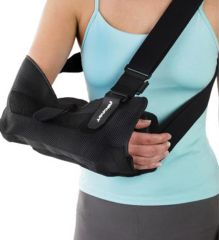Shoulder Arthroscopy
Shoulder arthroscopy is a surgical procedure used to visualize, diagnose, and treat various problems inside the shoulder joint and in the space surrounding the rotator cuff. This is done through small incisions that allow the insertion of specialized instruments. The arthroscope is a pencil-sized tool that contains magnifying lenses and a light source. This is attached to a small camera that projects a clear image of the joint on a TV monitor, allowing your surgeon to see all the structures inside your shoulder.
When is Arthroscopic Shoulder Surgery Used?
Arthroscopic shoulder surgery is used to treat a variety of common shoulder problems, including bursitis, tendonitis, arthritis, impingement, rotator cuff tears, labral tears and shoulder instability. Usually patients who have shoulder arthroscopy have not responded well to other treatment options including rest, physical therapy, anti-inflammatory medications, and steroid injections.
As with any injury, your doctor will be the best source of advice on the appropriate treatment method for your situation.
How is Shoulder Arthroscopy Performed?
Arthroscopy is typically performed in an outpatient surgery setting. The type of anesthesia used is up to the patient, surgeon, and anesthesiologist. Two or three small incisions, each the size of a dime, are needed to insert the scope and any necessary instruments. The joint is filled with sterile fluid to allow the surgeon to see more clearly. Most procedures take less than one hour to perform. Following surgery you may be in a sling or a special `shoulder immobilizer' depending on the type of surgery performed. You will be given specific instructions about whether or not you are allowed to move your arm immediately after the surgery.
Rest, icing, and anti-inflammatory medications will help decrease pain and swelling. The surgical area should be kept dry when showering for the first 3-5 days. After this, simply change the dressings after bathing. Patients usually begin light exercise in 1 week.
Return to full activities may take several weeks to several months depending on the type of surgery performed.
Benefits of Arthroscopic Shoulder Surgery
Benefits of arthroscopic surgery compared with older open surgical techniques include:
- Minimal scars
- No overnight hospital stay
- Decreased pain and swelling
- Improved motion
- Quicker functional recovery
- Fewer risks and complications
Risks and Complications
Complications from arthroscopic surgery are rare, and may include bleeding, infection, blood clots, nerve or blood vessel injury, persistent pain and the need for further surgery. The most common reason patients experience continuing pain after arthroscopic surgery is from underlying damage to the articular or lining cartilage of the joint (early arthritis).








